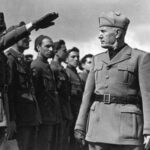
World War II or the Second World War (1 September 1939 – 2 September 1945) was a global conflict between two coalitions: the Allies and the Axis powers. Nearly all of the world’s countries participated, with many nations mobilising all resources in pursuit of total war. Tanks and aircraft played major roles, enabling the strategic bombing of cities and delivery of the first and only nuclear weapons ever used in war. World War II was the deadliest conflict in history, resulting in 70 to 85 million deaths, more than half of which were civilians. Millions died in genocides, including the Holocaust, and by massacres, starvation, and disease. After the Allied victory, Germany, Austria, Japan, and Korea were occupied, and German and Japanese leaders were tried for war crimes.
The causes of World War II included unresolved tensions in the aftermath of World War I and the rises of fascism in Europe and militarism in Japan. Key events preceding the war included Japan’s invasion of Manchuria in 1931, the Spanish Civil War, the outbreak of the Second Sino-Japanese War in 1937, and Germany’s annexations of Austria and the Sudetenland. World War II is generally considered to have begun on 1 September 1939, when Nazi Germany, under Adolf Hitler, invaded Poland, leading the United Kingdom and France to declare war on Germany. Poland was divided between Germany and the Soviet Union under the Molotov–Ribbentrop Pact. In 1940, the Soviets annexed the Baltic states and parts of Finland and Romania. After the fall of France in June 1940, the war continued mainly between Germany and the British Empire, with fighting in the Balkans, Mediterranean, and Middle East, the aerial Battle of Britain and the Blitz, and naval Battle of the Atlantic. Through campaigns and treaties, Germany gained control of much of continental Europe and formed the Axis alliance with Italy, Japan, and other countries. In June 1941, Germany led an invasion of the Soviet Union, opening the Eastern Front and initially making large territorial gains.
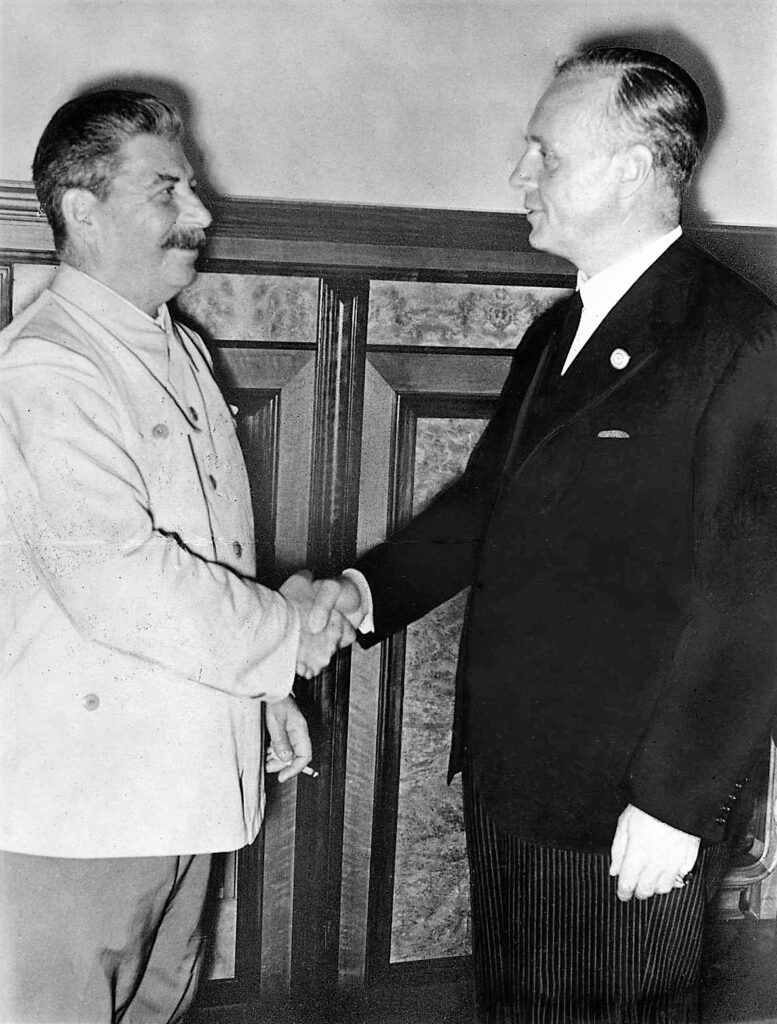
In December 1941, Japan attacked American and British territories in Asia and the Pacific, including at Pearl Harbor in Hawaii, leading the United States to enter the war against Japan and Germany. Japan conquered much of coastal China and Southeast Asia, but its advances in the Pacific were halted in June 1942 at the Battle of Midway. In late 1942, Axis forces were defeated in North Africa and at Stalingrad in the Soviet Union, and in 1943 their continued defeats on the Eastern Front, an Allied invasion of Italy, and Allied offensives in the Pacific forced them into retreat on all fronts. In 1944, the Western Allies invaded France at Normandy as the Soviet Union recaptured its pre-war territory and the U.S. crippled Japan’s navy and captured key Pacific islands. The war in Europe concluded with the liberation of German-occupied territories; invasions of Germany by the Western Allies and the Soviet Union, which culminated in the fall of Berlin to Soviet troops; and Germany’s unconditional surrender on 8 May 1945. On 6 and 9 August, the U.S. dropped atomic bombs on Hiroshima and Nagasaki in Japan. Faced with an imminent Allied invasion, the prospect of further atomic bombings, and a Soviet declaration of war and invasion of Manchuria, Japan announced its unconditional surrender on 15 August, and signed a surrender document on 2 September 1945.
World War II transformed the political, economic, and social structures of the world, and established the foundation of international relations for the rest of the 20th century and into the 21st century. The United Nations was created to foster international cooperation and prevent future conflicts, with the victorious great powers—China, France, the Soviet Union, the UK, and the U.S.—becoming the permanent members of its security council. The Soviet Union and U.S. emerged as rival global superpowers, setting the stage for the half-century Cold War. In the wake of Europe’s devastation, the influence of its great powers waned, triggering the decolonisation of Africa and Asia. Many countries whose industries had been damaged moved towards economic recovery and expansion.
Start and end dates
See also: List of timelines of World War II
World War II began in Europe on 1 September 1939 with the German invasion of Poland and the United Kingdom and France’s declaration of war on Germany two days later on 3 September 1939. Dates for the beginning of the Pacific War include the start of the Second Sino-Japanese War on 7 July 1937, or the earlier Japanese invasion of Manchuria, on 19 September 1931. Others follow the British historian A. J. P. Taylor, who stated that the Sino-Japanese War and war in Europe and its colonies occurred simultaneously, and the two wars became World War II in 1941.
Other proposed starting dates for World War II include the Italian invasion of Abyssinia on 3 October 1935. The British historian Antony Beevor views the beginning of World War II as the Battles of Khalkhin Gol fought between Japan and the forces of Mongolia and the Soviet Union from May to September 1939. Others view the Spanish Civil War as the start or prelude to World War II.
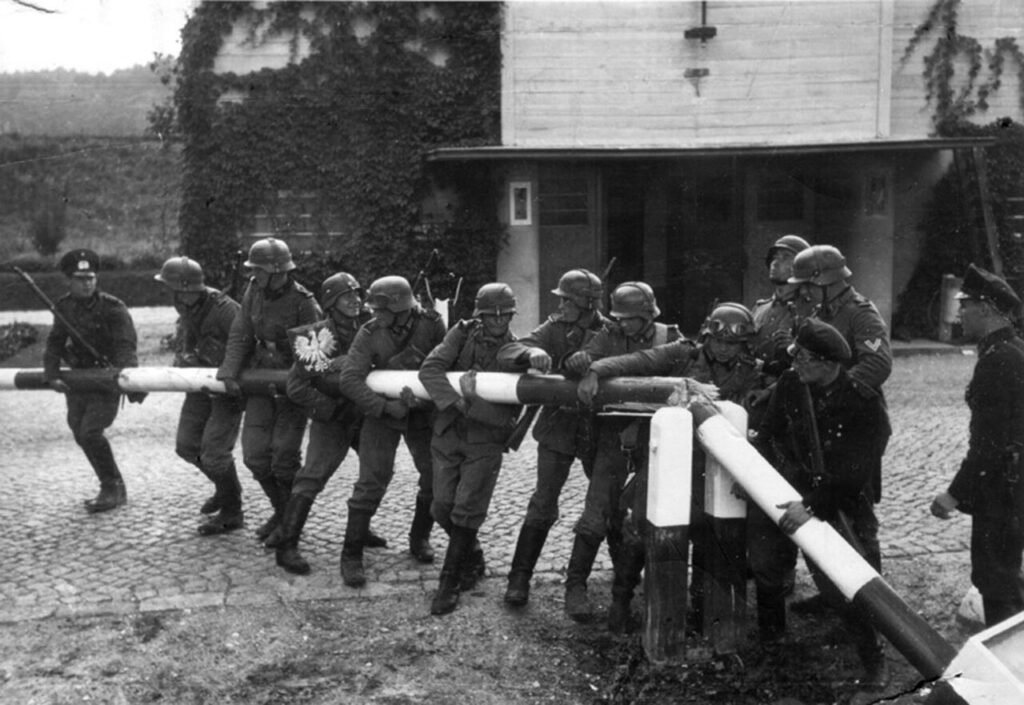
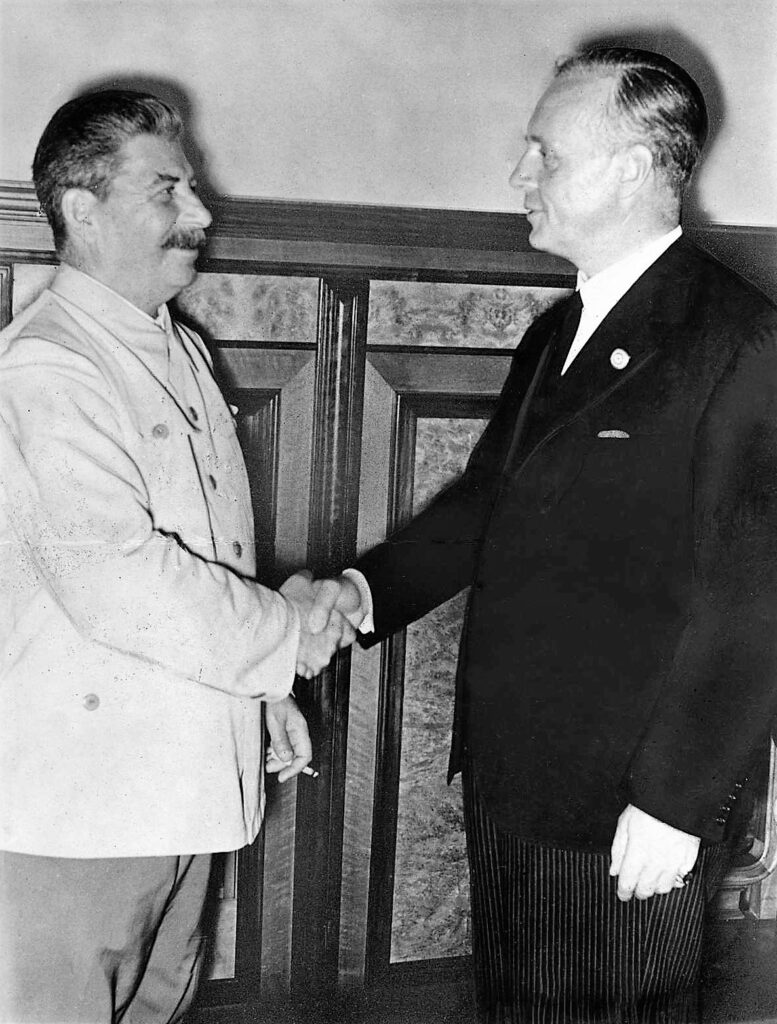
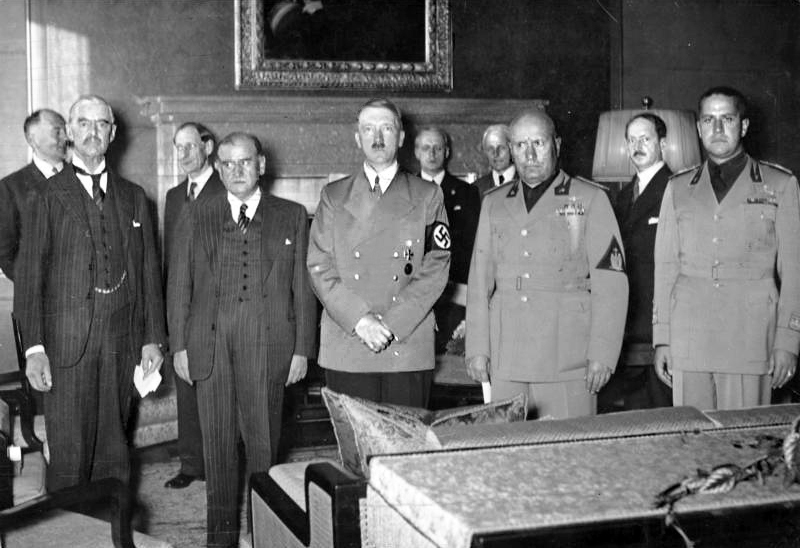
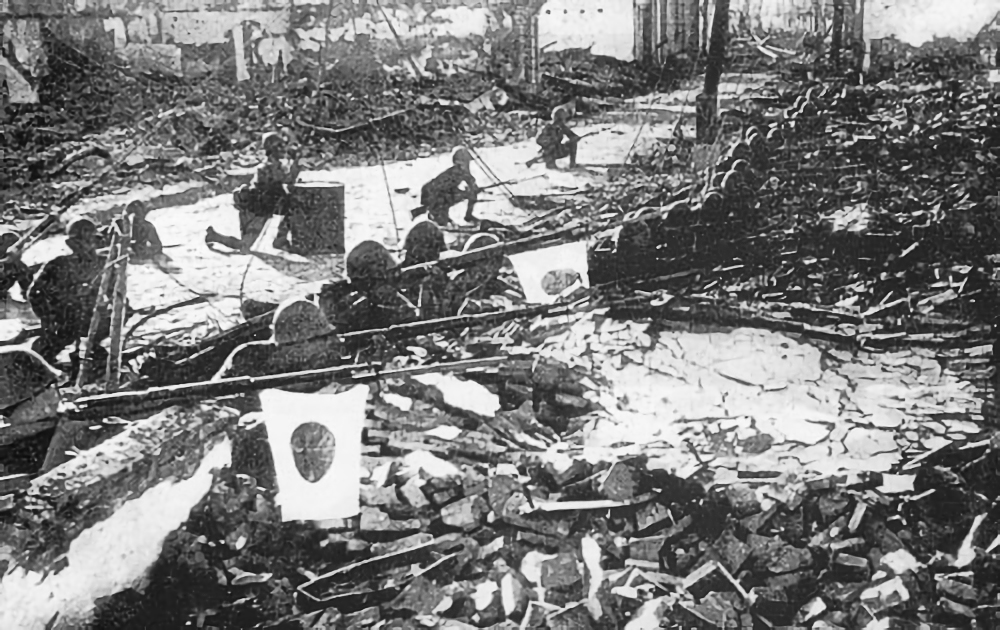

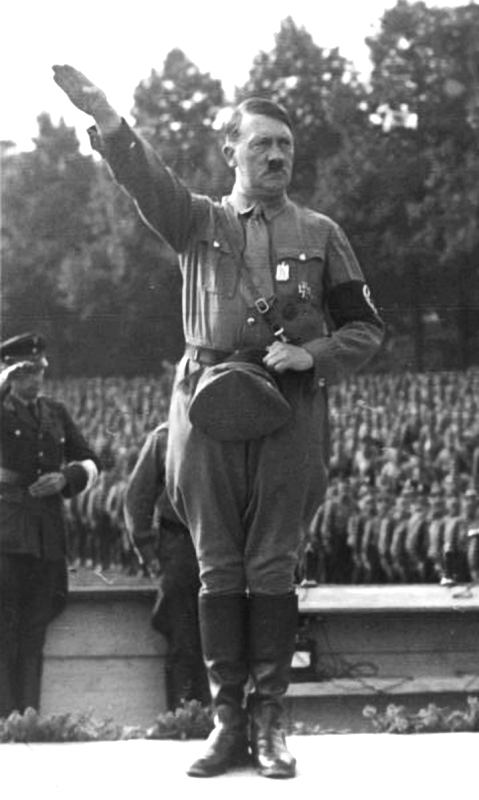

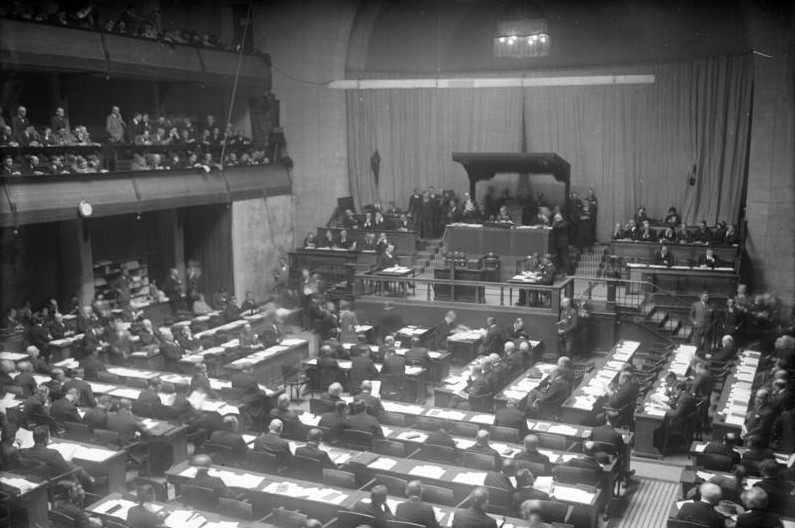
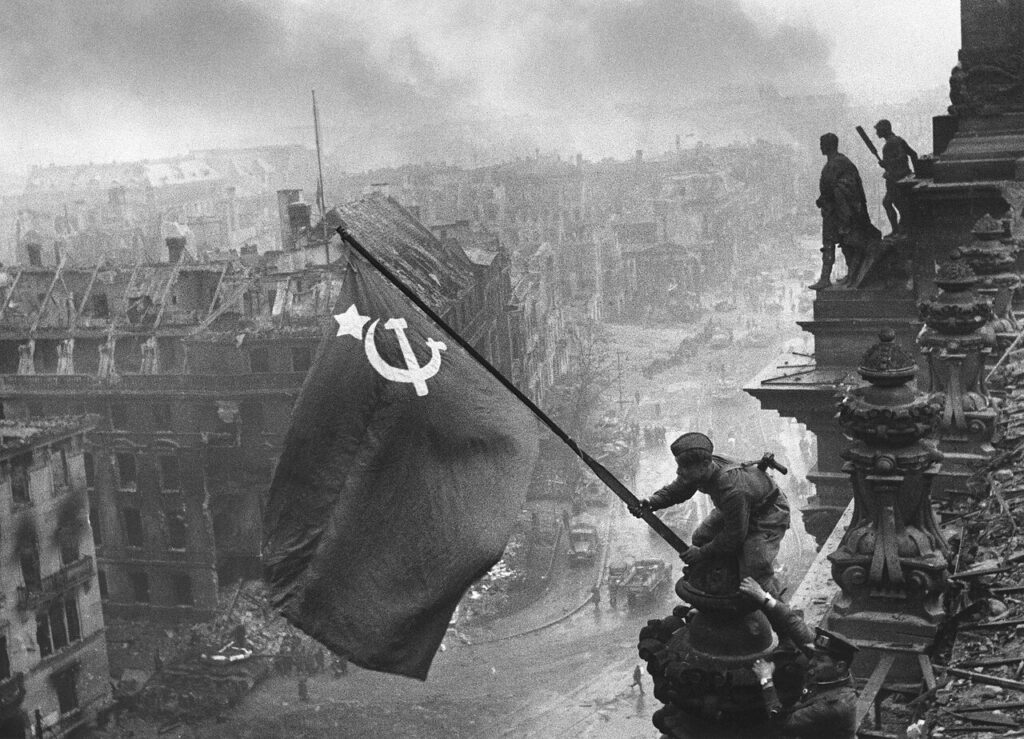
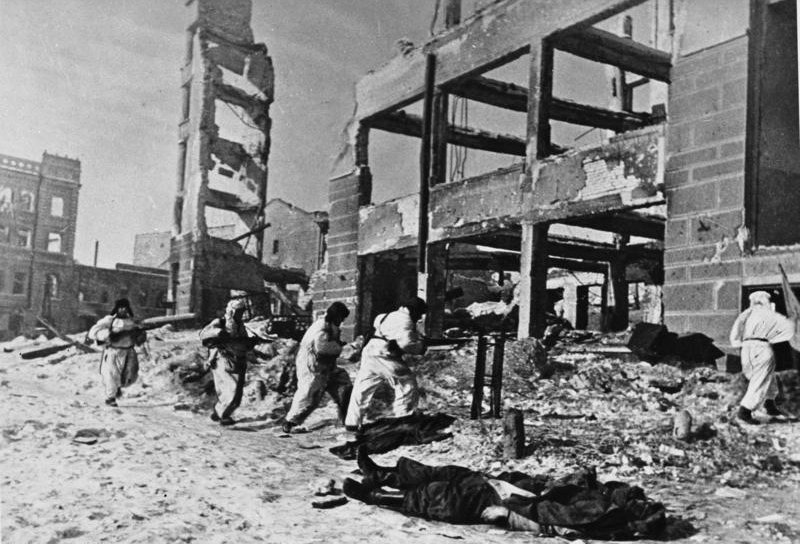
The exact date of the war’s end also is not universally agreed upon. It was generally accepted at the time that the war ended with the armistice of 15 August 1945 (V-J Day), rather than with the formal surrender of Japan on 2 September 1945, which officially ended the war in Asia. A peace treaty between Japan and the Allies was signed in 1951. A 1990 treaty regarding Germany’s future allowed the reunification of East and West Germany to take place and resolved most post–World War II issues. No formal peace treaty between Japan and the Soviet Union was ever signed, although the state of war between the two countries was terminated by the Soviet–Japanese Joint Declaration of 1956, which also restored full diplomatic relations between them.
Background
Main article: Causes of World War II
Aftermath of World War I
The League of Nations assembly, held in Geneva, Switzerland (1930)
World War I had radically altered the political European map with the defeat of the Central Powers—including Austria-Hungary, Germany, Bulgaria, and the Ottoman Empire—and the 1917 Bolshevik seizure of power in Russia, which led to the founding of the Soviet Union. Meanwhile, the victorious Allies of World War I, such as France, Belgium, Italy, Romania, and Greece, gained territory, and new nation-states were created out of the dissolution of the Austro-Hungarian, Ottoman, and Russian Empires.
To prevent a future world war, the League of Nations was established in 1920 by the Paris Peace Conference. The organisation’s primary goals were to prevent armed conflict through collective security, military, and naval disarmament, as well as settling international disputes through peaceful negotiations and arbitration.
Despite strong pacifist sentiment after World War I, irredentist and revanchist nationalism had emerged in several European states. These sentiments were especially marked in Germany because of the significant territorial, colonial, and financial losses imposed by the Treaty of Versailles. Under the treaty, Germany lost around 13 percent of its home territory and all its overseas possessions, while German annexation of other states was prohibited, reparations were imposed, and limits were placed on the size and capability of the country’s armed forces.
Germany and Italy
The German Empire was dissolved in the German revolution of 1918–1919, and a democratic government, later known as the Weimar Republic, was created. The interwar period saw strife between supporters of the new republic and hardline opponents on both the political right and left. Italy, as an Entente ally, had made some post-war territorial gains; however, Italian nationalists were angered that the promises made by the United Kingdom and France to secure Italian entrance into the war were not fulfilled in the peace settlement. From 1922 to 1925, the Fascist movement led by Benito Mussolini seized power in Italy with a nationalist, totalitarian, and class collaborationist agenda that abolished representative democracy, repressed socialist, left-wing, and liberal forces, and pursued an aggressive expansionist foreign policy aimed at making Italy a world power, promising the creation of a “New Roman Empire”.
Adolf Hitler, after an unsuccessful attempt to overthrow the German government in 1923, eventually became the chancellor of Germany in 1933 when President Paul von Hindenburg and the Reichstag appointed him. Following Hindenburg’s death in 1934, Hitler proclaimed himself Führer of Germany and abolished democracy, espousing a radical, racially motivated revision of the world order, and soon began a massive rearmament campaign. France, seeking to secure its alliance with Italy, allowed Italy a free hand in Ethiopia, which Italy desired as a colonial possession. The situation was aggravated in early 1935 when the Territory of the Saar Basin was legally reunited with Germany, and Hitler repudiated the Treaty of Versailles, accelerated his rearmament programme, and introduced conscription.
European treaties
The United Kingdom, France and Italy formed the Stresa Front in April 1935 in order to contain Germany, a key step towards military globalisation; however, that June, the United Kingdom made an independent naval agreement with Germany, easing prior restrictions. The Soviet Union, concerned by Germany’s goals of capturing vast areas of Eastern Europe, drafted a treaty of mutual assistance with France. Before taking effect, though, the Franco-Soviet pact was required to go through the bureaucracy of the League of Nations, which rendered it essentially toothless. The United States, concerned with events in Europe and Asia, passed the Neutrality Act in August of the same year.
Hitler defied the Versailles and Locarno Treaties by remilitarising the Rhineland in March 1936, encountering little opposition due to the policy of appeasement. In October 1936, Germany and Italy formed the Rome–Berlin Axis. A month later, Germany and Japan signed the Anti-Comintern Pact, which Italy joined the following year.
Asia
The Kuomintang party in China launched a unification campaign against regional warlords and nominally unified China in the mid-1920s, but was soon embroiled in a civil war against its former Chinese Communist Party (CCP) allies[27] and new regional warlords. In 1931, an increasingly militaristic Empire of Japan, which had long sought influence in China as the first step of what its government saw as the country’s right to rule Asia, staged the Mukden incident as a pretext to invade Manchuria and establish the puppet state of Manchukuo.
China appealed to the League of Nations to stop the Japanese invasion of Manchuria. Japan withdrew from the League of Nations after being condemned for its incursion into Manchuria. The two nations then fought several battles, in Shanghai, Rehe and Hebei, until the Tanggu Truce was signed in 1933. Thereafter, Chinese volunteer forces continued the resistance to Japanese aggression in Manchuria, and Chahar and Suiyuan. After the 1936 Xi’an Incident, the Kuomintang and CCP forces agreed on a ceasefire to present a united front to oppose Japan.










Leave a Reply